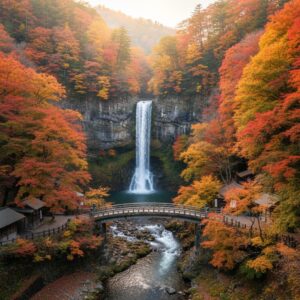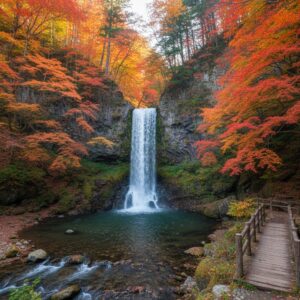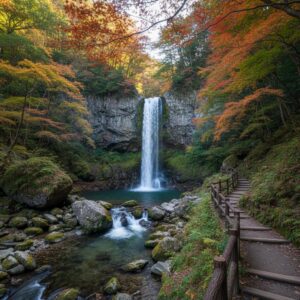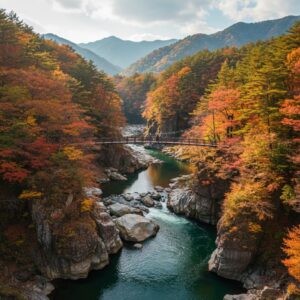Step off the train at Umeda, and you’re immediately swept into Osaka’s glittering heart, a dizzying vortex of department stores, towering skyscrapers, and rivers of people flowing through pristine underground malls. This is the Osaka you see on postcards, the polished, hyper-modern metropolis that dazzles and delights. But what if you’re searching for something else? What if you crave a city with its makeup off, a place where the concrete is a little cracked, the laughter is a little louder, and the night feels thick with stories that aren’t written in any guidebook? To find that Osaka, you only need to ride the train for three minutes. One stop. That’s all it takes to cross the Yodo River and arrive in a different world entirely. Welcome to Juso. At first glance, it’s a chaotic tangle of railway tracks, a bustling transportation hub where three Hankyu lines converge. But as dusk settles and the first neon signs flicker to life, Juso peels back its daytime skin to reveal its true identity: one of Osaka’s most authentic, gritty, and unapologetically vibrant nightlife districts. This isn’t a curated experience for tourists. This is where Osakans come to play, to drink, to eat, and to be themselves, away from the polished veneer of the city center. It’s a place that hums with a raw, electric energy, a Showa-era soul that refuses to be gentrified. Juso is a sensory overload in the best possible way—the sizzle of oil hitting a hot griddle, the low rumble of trains overhead, the boisterous cheers spilling from a packed standing bar, and the sweet, smoky scent of yakitori clinging to the air. It’s a neighborhood that doesn’t just invite you to look; it demands that you dive in, get your hands dirty, and experience the unfiltered rhythm of local Osaka life. Forget your itinerary for a moment. This is your portal to the city’s pulsing, honest-to-goodness core.
If you need a break from the city’s electric energy, consider a day trip to experience the serene beauty of Minoo Waterfall just outside Osaka.
The Electric Atmosphere: A Symphony of Neon and Nostalgia
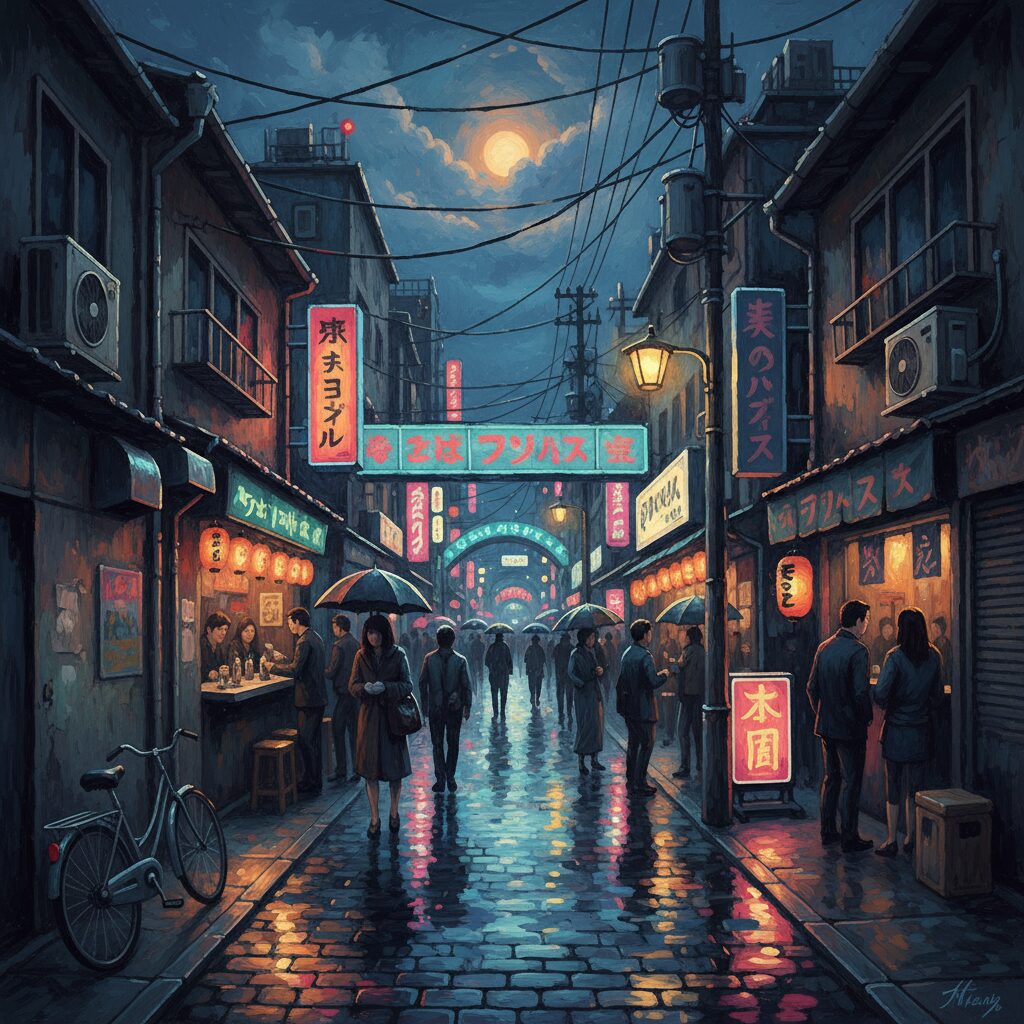
Exiting from Juso Station‘s west exit feels like being plugged straight into the neighborhood’s electric heartbeat. The energy is immediate and tangible. Before you even find your footing, you’re immersed in a whirl of sound and light. The constant clatter and upbeat electronic jingles from enormous pachinko parlors provide the area’s steady, hypnotic beat. Above, a jumble of signs vies for your gaze, their neon glow casting the pavement in shades of electric blue, fiery red, and acid green. These aren’t the sleek, minimalist signs of downtown; rather, they are bold, often weathered markers of businesses that have endured for decades, their kanji characters radiating a warm, inviting glow into the dimming streets. The air itself carries a complex bouquet—a mix of charcoal grills firing up for the evening rush, the rich, savory aroma of dashi broth simmering in ramen shops, and a faintly sweet trace of stale beer and cigarette smoke that seems embedded in the asphalt over the years. It speaks of countless nights of celebration.
Strolling through the main shotengai, or covered shopping arcade, you encounter a living museum of Showa-era Japan. Unlike the tourist-centric arcades in Namba, this one caters to the local community. Here are modest greengrocers, old-fashioned candy stores, and shops selling everyday necessities, nestled beside inexpensive, lively eateries and boisterous bars. The architecture is a charming jumble—a mix of mismatched facades, aging tilework, and exposed wiring that favors function over style. It feels lived-in, genuine, and completely unpretentious. This is where you witness the true diversity of Osaka society. Salarymen, ties loosened, laughing heartily over plates of grilled offal. Groups of young people drawn by the promise of an affordable, lively night out. Elderly couples sharing a quiet drink at a familiar counter. Juso is a great leveler; beneath the glow of its neon lights, everyone is simply seeking a good time, a satisfying meal, and a drink to unwind after the day.
The Heartbeat of Juso: Diving into the Drinking Scene
The essence of Juso truly lies in its astonishing concentration of drinking spots. This isn’t a place for elaborate cocktails or extensive wine lists. It’s a stronghold of beer, sake, and shochu, served quickly, affordably, and without any fuss. The local drinking culture centers on accessibility and camaraderie, and nowhere is this clearer than in its renowned tachinomi, or standing bars.
The Art of the Tachinomi
A tachinomi offers the quintessential Juso experience. These are often tiny, brightly lit spaces, sometimes no larger than a walk-in closet, with a simple counter and space for only a few patrons to stand shoulder-to-shoulder. The appeal is straightforward: speed, value, and connection. You squeeze in, order a draft beer or a highball that arrives in seconds, and pair it with a few small, inexpensive dishes like doteyaki (slow-cooked beef sinew in miso) or skewers of kushikatsu (deep-fried meat and vegetables). The turnover is fast, the prices incredibly low, and the atmosphere hums with lively conversation. For a first-timer, pushing past the curtain into such a tight-knit space can be daunting, but usually a simple smile and nod are enough to be welcomed in. In these bars, you’ll hear the unfiltered Osaka dialect, share a laugh with a stranger over a shared plate of pickles, and feel, even if briefly, like a true local. The beauty of the tachinomi lies in its fleeting nature; you can drop in for a quick ten-minute drink before catching your train or make it the first stop in a longer bar-hopping night.
The Comfort of the Izakaya
While tachinomi offer quick visits, Juso’s izakayas invite you to linger. These casual pub-restaurants are the neighborhood’s living rooms. They range from smoky, wood-paneled dens that seem untouched since the 1970s to somewhat more modern, lively halls filled with the chatter of friends and colleagues. Menus are often handwritten on strips of paper pasted to the walls, presenting a wide and sometimes overwhelming selection of home-style Japanese comfort foods. You’ll find everything from sashimi and grilled fish to karaage (Japanese fried chicken) and hearty noodle dishes. Shochu is often the drink of choice, a versatile spirit that can be mixed with water, tea, or fruit juice, and typically ordered by the bottle to share. An evening in a Juso izakaya is a lesson in communal happiness. The food is made for sharing, the drinks for toasting, and the purpose is to talk, laugh, and connect. Don’t be surprised if the group next to you starts a conversation, offering you a taste of their food or a pour from their bottle. This is the spirit of Juso—open, friendly, and always ready to share a drink.
Unveiling the Deeper Layers: The Famous Red-Light District
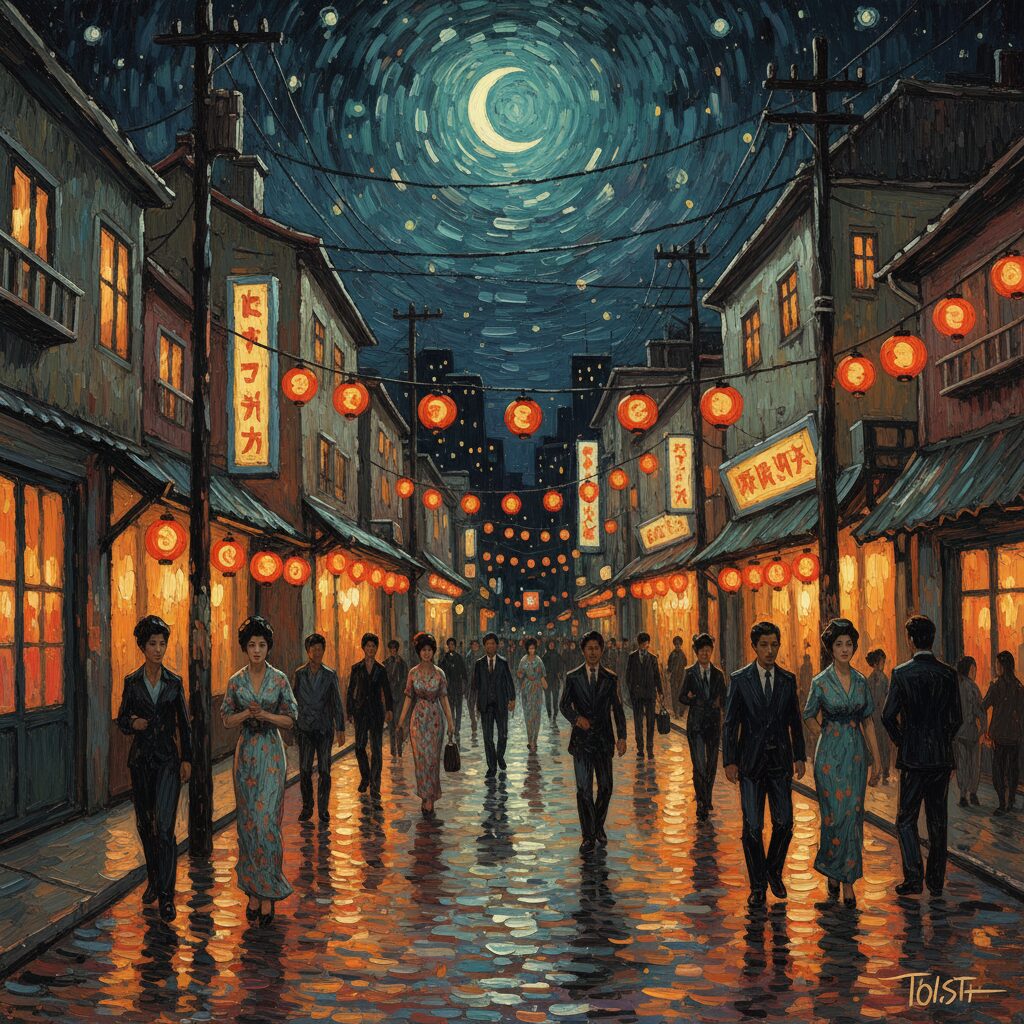
It’s impossible to depict an honest portrayal of Juso without recognizing its most famous, and perhaps most contentious, feature: its long-established red-light district. Nestled within a particular maze of streets west of the station, this area forms a vital part of the neighborhood’s identity as an unfiltered, adult playground. To overlook it is to miss the full range of Juso’s character. The moment you step into one of these alleys, the atmosphere changes. The noise from the main street fades, replaced by a quieter, more charged ambiance. The architecture here is distinctive, with many buildings preserving a unique post-war style. Traditional wooden facades with intricate latticework stand alongside structures adorned with whimsical, almost theatrical embellishments. The lanes glow softly under the warm light of red and pink paper lanterns, casting long shadows on the narrow pavement.
For the curious traveler, this district offers insight into a side of Japanese culture rarely spoken of openly. It stands in stark contrast to the serene temples and meticulously maintained gardens. This is a place governed by its own rules and rhythm. For visitors, respect and awareness are essential. This is not a typical tourist destination. It is a living district, and its residents and workers deserve to be treated with dignity. Photography is strictly forbidden and considered deeply disrespectful. While walking through these streets is generally safe, it is a space for observation rather than interaction. It serves as a powerful reminder that Juso is a complex locale, a blend of light and shadow, where wholesome community spaces coexist with adult entertainment zones. This duality is what makes it so compelling—it is a neighborhood that refuses to be sanitized or simplified, offering its full, multifaceted identity to anyone willing to see.
More Than a Drink: The Flavors and Sights of Juso
While nightlife is the main attraction, Juso’s charm goes beyond the bottom of a glass. The area is a haven for delicious, unpretentious cuisine, most notably as the birthplace of negi-yaki. Often mistaken for a variety of okonomiyaki, negi-yaki is actually a distinct creation. Instead of cabbage, the batter is packed with a generous amount of chopped green onions (negi), giving it a sharper, fresher, and more aromatic flavor. It’s usually seasoned with soy sauce rather than the sweet okonomiyaki sauce and often includes fillings like beef tendon (suji) or pork. Enjoying negi-yaki at a venerable establishment such as Yamamoto, where it was first invented, is a pilgrimage for many Osakans. Watching the chefs skillfully cook the dish on the huge iron teppan grill right before your eyes is half the pleasure. The sizzle and the incredible aroma that fills the air create an experience all on their own.
As the night deepens, the rising steam from countless late-night ramen shops draws many revelers. A bowl of rich, savory tonkotsu ramen is the ideal way to conclude an evening of drinking, with its hearty broth and satisfying noodles providing a comforting anchor after a night of adventure. Yet, Juso’s cultural tapestry is woven with more than just food and drink. The neighborhood hosts several independent cinemas, such as the Juso Seventh Art Theater, which focus on art-house films, documentaries, and classic movies. These small, cherished theaters reflect the area’s appreciation for culture beyond the mainstream, further solidifying its identity as a place with a strong, independent spirit.
A Practical Guide for the Intrepid Explorer
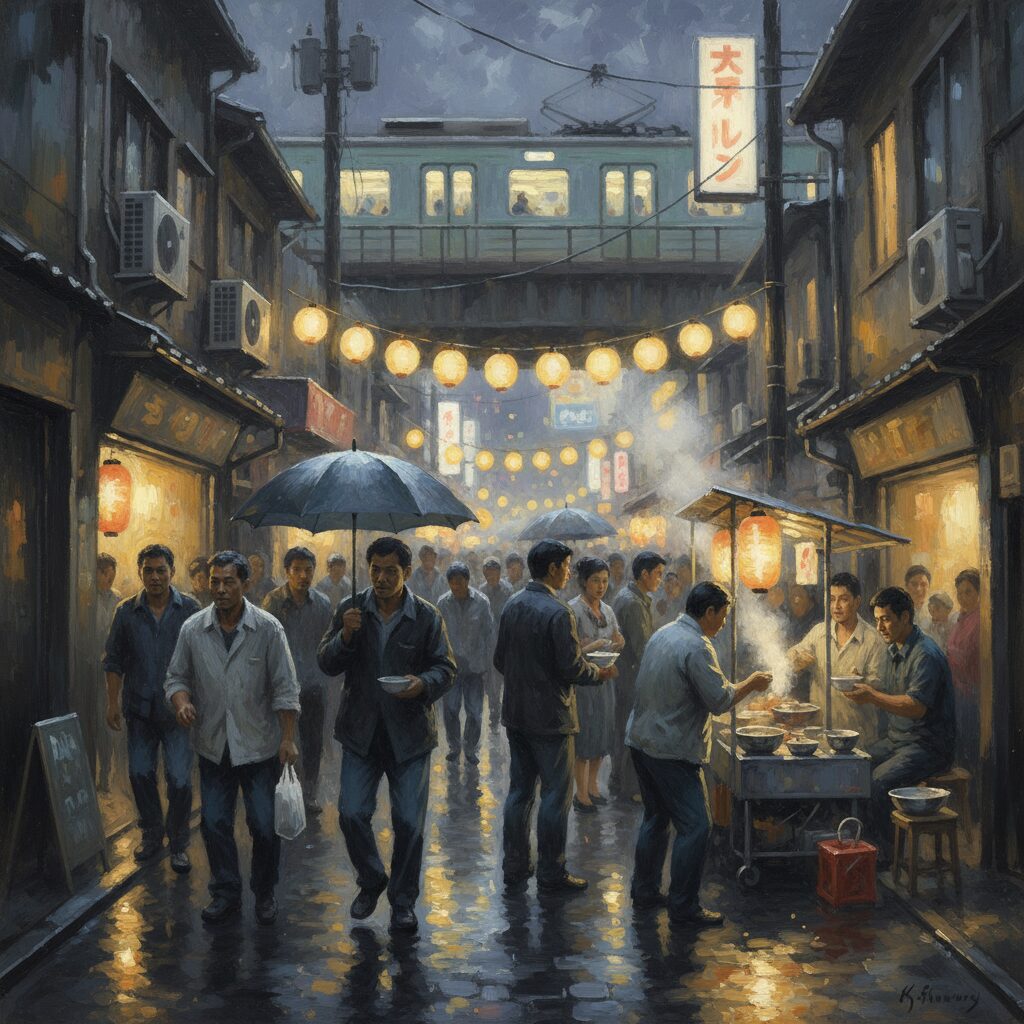
Navigating Juso is surprisingly straightforward, but a few local tips can help make your visit even smoother and more enjoyable. Its biggest advantage is its remarkable accessibility. Juso Station is served by all three Hankyu Railway lines—the Kobe, Takarazuka, and Kyoto lines—placing it just one stop and a quick three-minute ride from the bustling Osaka-Umeda Station. This close proximity to the city center, combined with its distinct atmosphere, makes it an ideal choice for a spontaneous evening outing.
Timing is key. While the area functions as a busy transportation hub during the day, the real charm begins around 6 PM as lights start to flicker on and the first after-work drinkers appear. The streets reach their liveliest between 8 PM and 11 PM, when izakayas are packed and laughter fills the air. Many venues remain open well past midnight, with ramen shops often serving the late-night crowd until the early morning hours.
A few simple tips can make a big difference. First, bring cash. Although larger establishments may accept credit cards, many of the most authentic and inviting places—tiny tachinomi bars and traditional eateries—only take cash. Don’t hesitate to step into spots that look intimidating from the outside; a plain curtain over the doorway often hides the warmest welcome. A polite “Konbanwa” (Good evening) when entering and “Gochisosama” (Thanks for the meal) upon leaving will be greatly appreciated. Pace yourself; drinks are inexpensive and flow freely, so it’s easy to overdo it. Start with a beer, gauge how you feel, and remember that bar-hopping is a marathon, not a sprint. Lastly, be respectful and observant. Juso is a proud local neighborhood—treat it as you would your own home, and it will reward you with an unforgettable experience.
The Unpolished Gem
Juso won’t be found on any list of Japan’s most beautiful places. It’s neither manicured nor quiet, and it definitely isn’t tailored for the casual tourist. There are no ancient temples or world-class museums here. What Juso offers is something far rarer and, in many respects, more valuable: a glimpse of the authentic. It’s a place that openly displays its history, its spirit, and its flaws. This loud, chaotic, and wonderfully human corner of Osaka has steadfastly resisted the homogenizing forces of modern life. Visiting Juso is about more than just grabbing a drink; it’s about connecting with the city’s working-class heart, experiencing a community that is vibrant, resilient, and fiercely genuine. So, if you’re growing weary of the polished tourist routes and want to see a side of Japan that’s a bit rough around the edges but bursting with life, take that three-minute train ride. Cross the river. Step into the neon glow and let Juso’s raw, beautiful chaos reveal the true pulse of Osaka.

